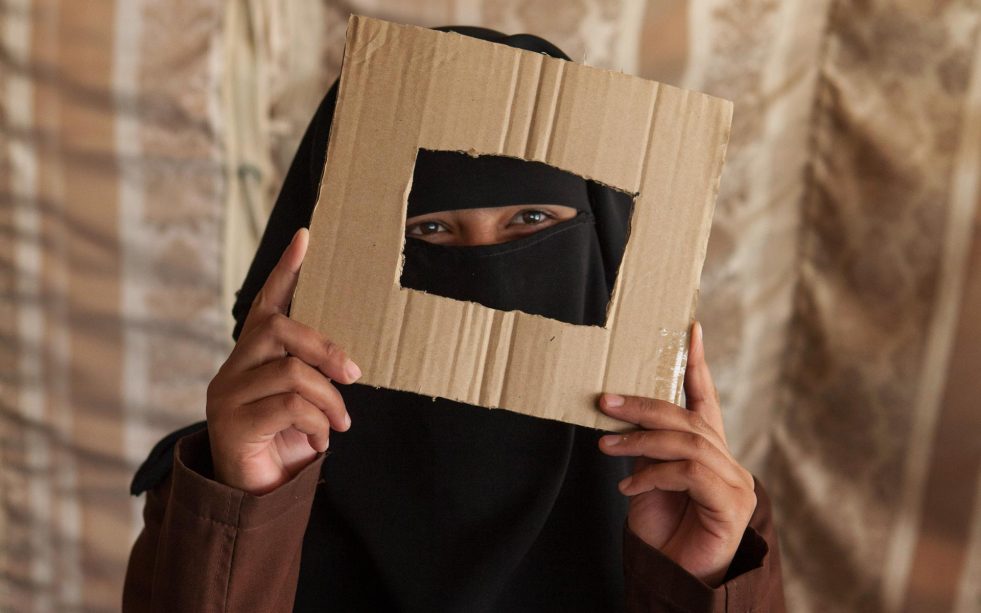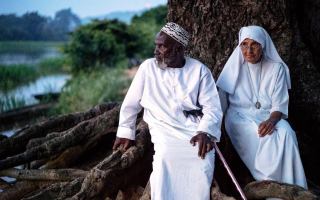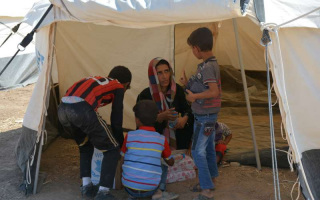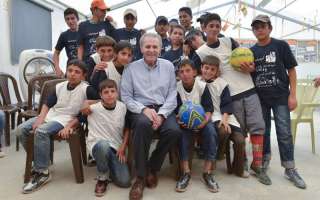
At age 19, Fatima is already a mother, a widow and a refugee. Through photography, she’s coming to terms with her grief and eyeing the future. © UNHCR/B.Bannon
Just 19 years old, Fatima is already a widowed mother of three and a refugee from the conflict in Syria. Through photography, she has found a way to relate her experiences and begin rebuilding her shattered life.
“Sometimes when I see my friends who are the same age, still studying, taking courses, not married and with no kids, I feel I am still young,” Fatima tells me when we meet. “But grief is not a light thing to carry. It’s a heavy burden. It can age and weaken a person.”
As we sit in her nondescript shelter inside Jordan’s Za’atari refugee camp and she describes the events that brought her here, I have to remind myself that she is still only 19.
Two years ago she was living with her husband, Mustafa, and two young sons in an abandoned school close to the Syrian capital, having been driven from their home in the suburban Damascus district of Ghouta by constant shelling.
“Grief is not a light thing to carry,” says Fatima, a teenager wise beyond her years. “It’s a heavy burden. It can age and weaken a person.”
She calmly recalls the horror of watching from a window one day as her husband and his brother were detained and beaten by soldiers at a checkpoint near the school. A few hours later her deepest fears were confirmed. Her husband had been killed, and his body put on public display.
“That was the worst moment of my life,” Fatima says. “They took my husband right in front of me and I was helpless to do anything. We couldn’t bury his body.”
A widow at 17 and pregnant with her third child, she left behind her homeland and the only life she knew. While her parents remained in Syria, she and her sons joined her husband’s family and paid smugglers to take them over the border to Jordan.
Fatima briefly steps out of the room, and her mother-in-law takes me aside and tells me how worried they were. “She was very isolated and found it hard to look after her children, she just slept all the time.” When she heard that Fatima had been invited to take part in a UNHCR photography workshop for young refugees at the camp, she encouraged her to join.
When she shows me her work she becomes suddenly animated. As with other students, some of Fatima’s photos are disturbing depictions of death, fear and loss. In one startling image, taken for an assignment on dreams, she kneels on the floor cradling her son, who is wrapped in a burial shroud.
She explains why she took the photo despite her family’s protestations. “We have had three family members killed, so they thought I was predicting his death. But I have seen many such scenes in my life, so it’s normal that I would see it in my sleep and dream about it.”
“The most important thing this course has taught me is courage,” Fatima says. “It has allowed me to be amongst people again, to make friends and laugh again.”
Much of her other work is playful and full of hope, with her children also featuring prominently. They are her future now, she says, and the reason she will go on surviving whatever the circumstances.
Before I leave, Fatima tells me that she often thinks of her husband – especially his kindness, his jokes and the little ways he used to annoy her. But she is no longer consumed by the past. “It’s fate and I have to make peace with it. I might still look sad to you now, but I am so much better and happier than I used to be.”
See more of Fatima’s photographs at Do You See What I See?





